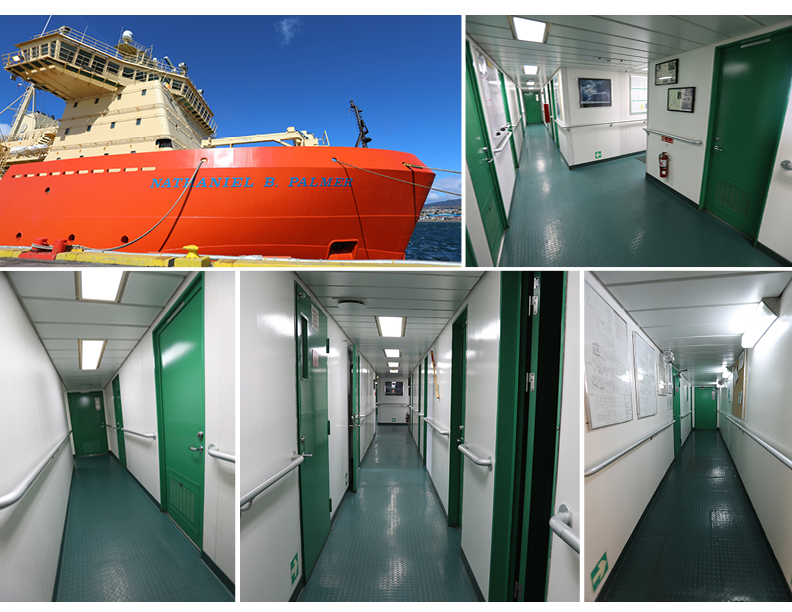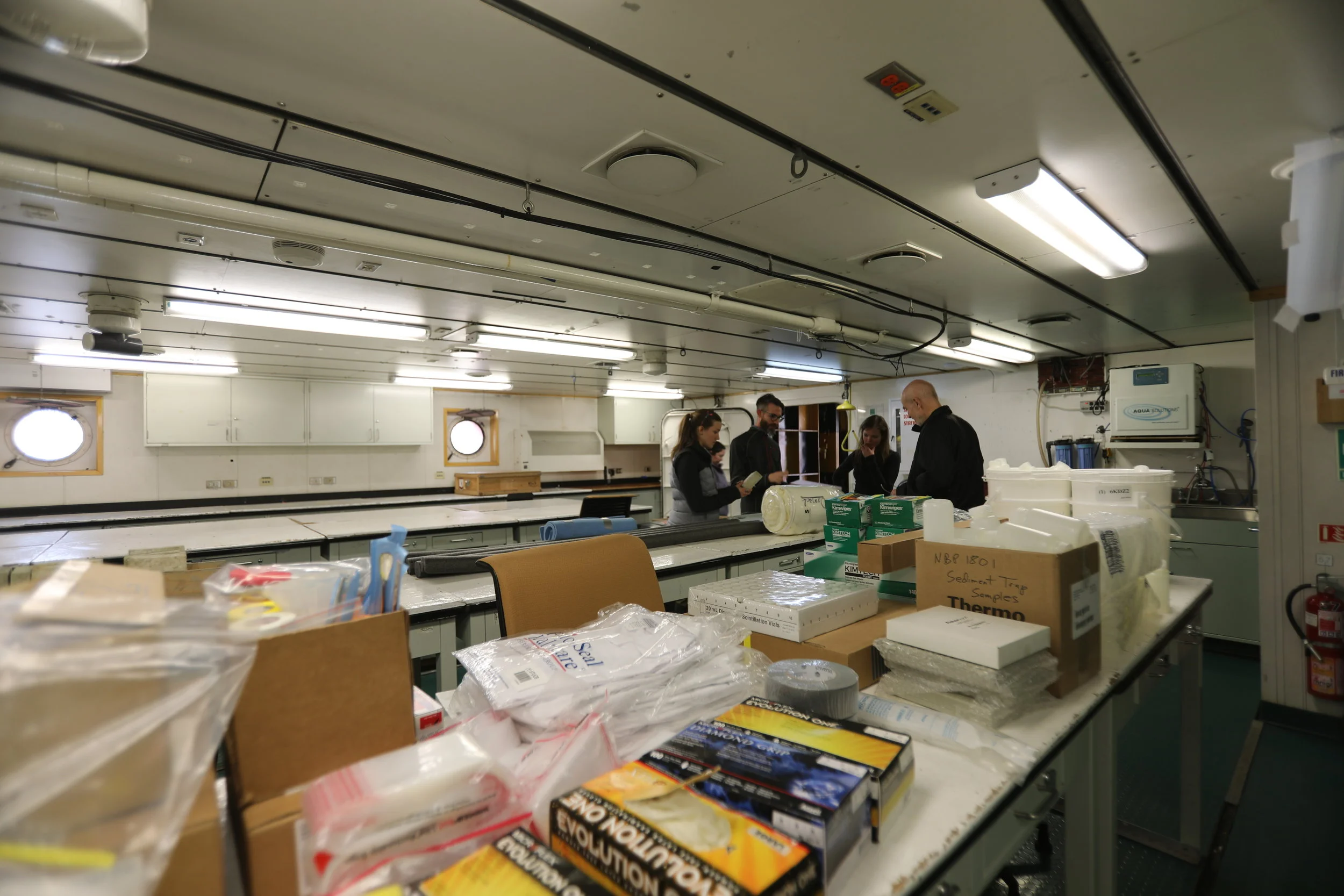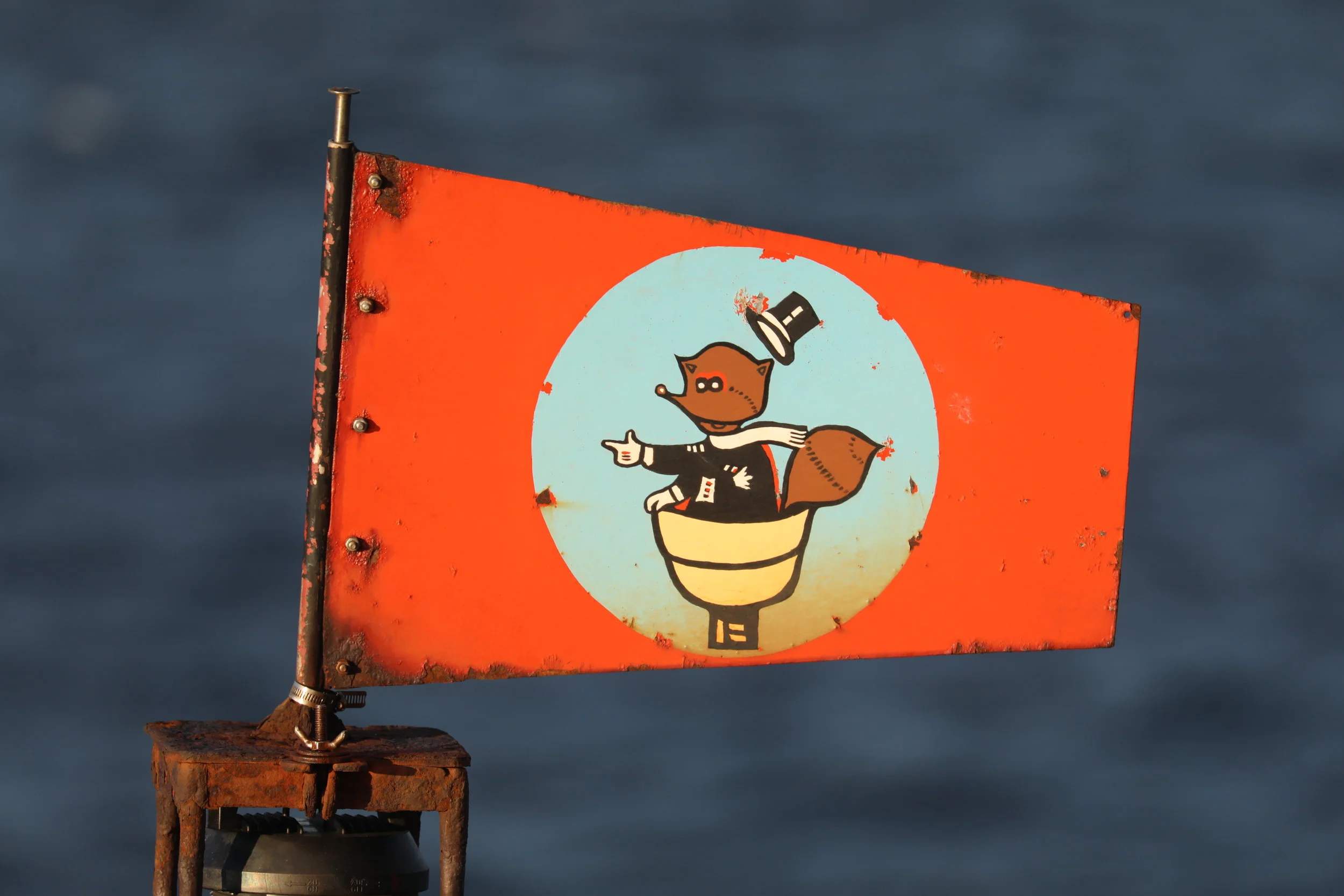First Things First...
/After 24 hours of travel from Houston, Texas to Punta Arenas, Chile, I arrived exhausted yet excited (and perhaps just a wee bit anxious of the unknown) to be part of something very unique. My name is Linda Welzenbach and my role on this expedition is to share the scientific discoveries that will come from our journey to Antarctica on board the RVIB (research vessel/ice breaker) Nathaniel B. Palmer (NBP). Akin to a spacecraft exploring new frontiers beyond Earth, the Nathaniel B. Palmer and her marine operations specialists will navigate safe passage through Antarctica’s icy waters for the 26 ITGC scientists and the wide array of science activities they have planned over the next two months.
This first post will bring you aboard to see what she has to offer, and how scientists become seafaring explorers. NBP’s origins and history will be highlighted in a later post.
Welcome to the Nathaniel B. Palmer! She is a beautiful ship, with commodious berths…if you can find the one green door among many that is assigned to you.
The NBP’s vitals can be found on the USAP website HERE
Radio journalist Carolyn Beeler models the steel toed boots needed to work on deck and onshore.
Upon arriving Sunday evening, we discover that the ship would be leaving a day early. The NBP was thirsty and if we wanted to stay on schedule, we would need to leave for the “gas station” Monday evening.
Prior to departure, we head to the U.S. Antarctic Program warehouse for orientation and distribution of the necessary Extreme Cold Weather (ECW) gear.
We are on board for just a couple hours, yet the first task will be to participate in a simulated exit. As part of that exercise, we must be able to put on flotation suits, which are required for situations that call for abandoning ship (below). During the cruise we will practice several more drills of this nature, to build muscle memory in the event of a real emergency.
In anticipation of an evening departure, we met in the laboratory to unpack and sort through all the core processing supplies, stowing them securely in anticipation of the rough seas that characterize Drake’s passage. To see live weather, and forecasts, click HERE.
Interpretive dance is the best approach for getting into the flotation suit.
Dr. Rebecca Totten Minzoni (left) and her Ph.D. student Victoria Fitzgerald successfully complete the flotation suit challenge.
There are two covered life boats for passengers- each one can hold the full complement of scientists.
THOR scientist Dr. Alastair Graham in the surprisingly comfortable life boat.
THOR team members (l to r)- Rebecca Totten Minzoni, Alastair Graham, Rachel Clark, Rob Larter- sort through and distribute core processing supplies in the core processing lab. All drawers and cabinets have dog-locks to ensure they do not open during passage through rough seas.
A bit after 7pm, #NBP1902 left Punta Arenas to refuel. As of this posting, we are back in Punta Arenas, and remain here until maintenance activities have been completed. For more information about that, go HERE.
Linda is the science communications specialist in the Department of Earth, Environmental and Planetary Sciences at Rice University. She is a geologist and veteran of two expeditions to collect meteorites from Antarctica. Her role for THOR is public outreach, and so she will communicate science activities during the first scientific cruise in 2019-NBP19-02 and serves as the project webmaster.















